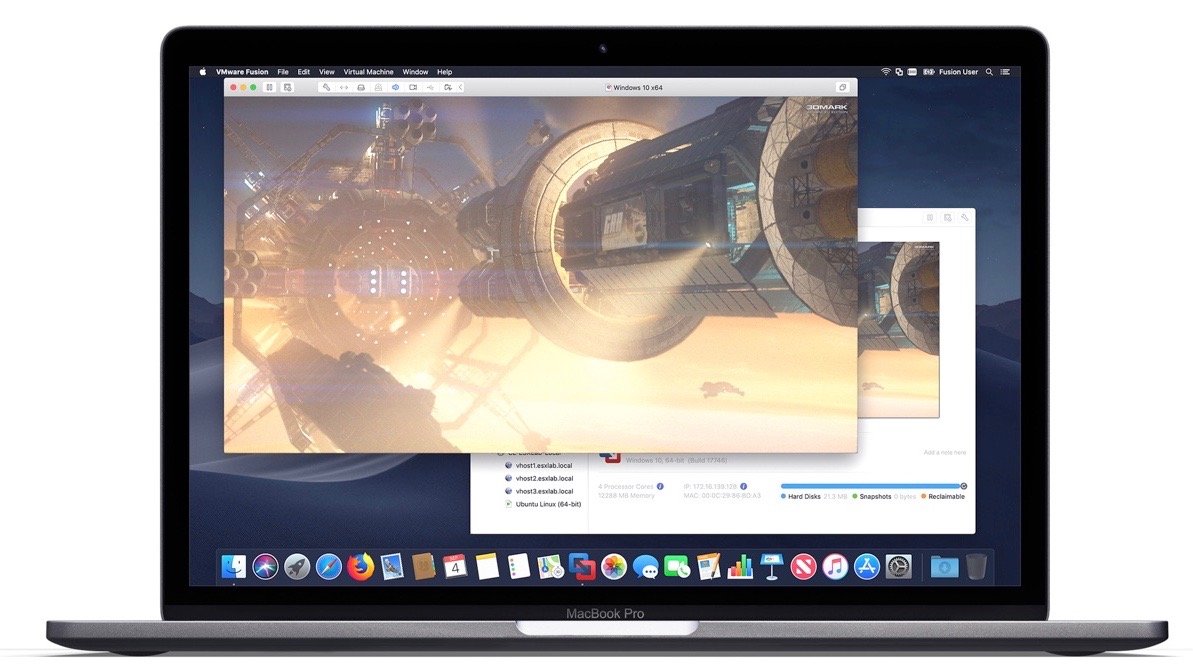

- #MAC OS HIGH SIERRA VMWARE FUSION 7 MAC OS#
- #MAC OS HIGH SIERRA VMWARE FUSION 7 INSTALL#
- #MAC OS HIGH SIERRA VMWARE FUSION 7 SERIES#
- #MAC OS HIGH SIERRA VMWARE FUSION 7 DOWNLOAD#
- #MAC OS HIGH SIERRA VMWARE FUSION 7 MAC#
#MAC OS HIGH SIERRA VMWARE FUSION 7 MAC#
Not only are these immutable system files stored on their own System volume, but your Mac no longer boots from that as a conventional volume: it’s actually a snapshot, another modernising feature of APFS which has made this all possible.

Those two folders are firmlinked together and the Finder creates the illusion that it’s just a single folder. In Monterey, what appears in the Finder to be a single folder with the same contents actually consists of two folders: one on the System volume contains the apps installed as part of macOS, the other on the Data volume contains those we install.
#MAC OS HIGH SIERRA VMWARE FUSION 7 DOWNLOAD#
My favourite example of this is what used to be the single top-level Applications folder, containing a mixture of bundled apps which are installed with macOS, and our own apps which we download from the App Store and Internet. This layout segregates the contents of the system into files which don’t change, except in a macOS update, and everything else which does. In this simplified diagram of the boot volume group in Monterey, folders stored on the System volume are shown in red, and those on the Data volume in blue.

Catalina’s separate System volume became a sealed snapshot, protecting the system files even more, and that’s what Monterey uses too. From here on, I’ll refer to Macs with Secure Boot Intel Macs without T2 chips have more limited benefits.īig Sur completed the transformation.
#MAC OS HIGH SIERRA VMWARE FUSION 7 SERIES#
Macs supplied with internal SSDs also gained Secure Boot, thanks to their T2 chips, and most recently with the integral Secure Boot of the M1 series chips. Apart from speed, SSDs brought additional benefits, of increased reliability and their lack of ill-effects from fragmentation. It’s still possible to boot Big Sur and even Monterey from a hard disk, but that’s not through choice.
#MAC OS HIGH SIERRA VMWARE FUSION 7 INSTALL#
While it was just possible to install Mojave on and boot from HFS+ on a rotating hard disk, by Catalina you have to boot from APFS, and that in turn requires an SSD. Other changes were taking place in our Macs. One, which only changes in macOS updates and installs, became the System volume, and is mounted read-only the other, the Data volume, then contains all the writeable files, including user Home folders, and those parts of the system which can change between updates. This often works well, as there’s precious little to prevent system files from becoming corrupted, and no means of telling whether they have been.Ĭatalina brought the intermediate step in addressing those shortcomings, by splitting the boot volume into two, another new feature of APFS. As with previous versions, one of the most popular solutions to a wide range of problems has been to re-install the system. Many of the system folders within this are protected by SIP, but all are within a common file system, are installed and updated together, and there’s no checking of integrity. In Mojave, macOS has reached its peak booting from a single volume, with a layout broadly similar to many versions of Unix. Whereas HFS+ needs journalling and frequent maintenance, and even then is often left with minor errors in the file system, APFS is designed to be thoroughly robust. One of the most significant advances in APFS is to make changes to the file system more reliable using copy-on-write. Its predecessor HFS+ had served long and well, and is known to have several longstanding flaws. First, High Sierra introduced a new file system, APFS.
#MAC OS HIGH SIERRA VMWARE FUSION 7 MAC OS#
To understand what has happened, consider the changes made in Mac OS and macOS from Sierra. This is particularly aimed at those who have been running older versions of macOS, and are finding themselves suddenly dealing with Monterey, for example on a new M1 Pro/Max MacBook Pro. This article explains what has happened and how it affects the way that you use macOS.

That changed with the release of Big Sur, and continues to improve. One of the worst longstanding problems with macOS has been its unreliability, and by that I’m not referring to bugs, but the fact that until a year ago you never knew whether your Mac’s system was intact or had become corrupted.


 0 kommentar(er)
0 kommentar(er)
